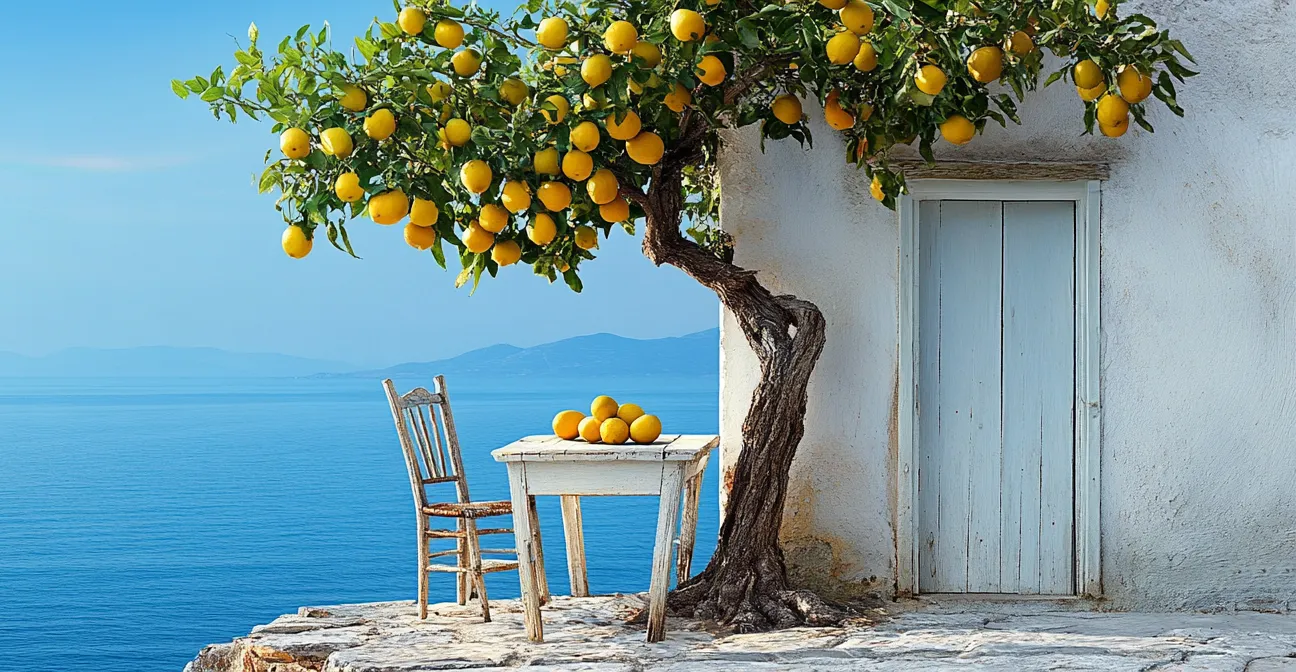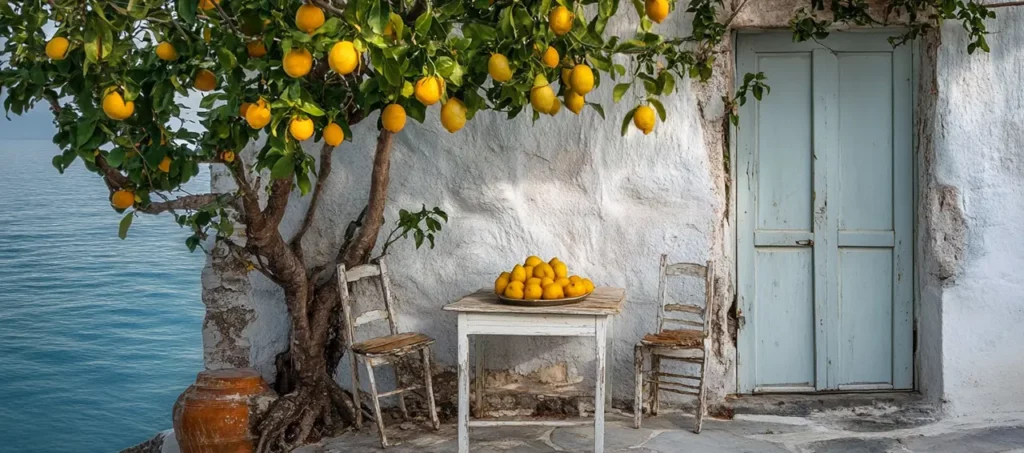
The Mediterranean islands boast diverse culinary traditions influenced by Greek, Arab, Spanish, Venetian, French, British, and Ottoman cultures. Sicily features dishes like arancini and cannoli, while Corfu offers pastitsada and sofrito. Sardinia's specialties include porceddu and fregola, reflecting its pastoral heritage. Each island's cuisine highlights local ingredients and rich agricultural histories.
The Mediterranean Sea, often dubbed the “incubator of Western civilization,” is a historically significant body of water connecting Europe, Africa, and Asia. Its nearly enclosed waters are bordered by Southern Europe, North Africa, and the Levant in West Asia, linking to the Atlantic Ocean through the Strait of Gibraltar. This unique geographical positioning has fostered a rich tapestry of diverse cultures and cuisines across its many islands, creating a culinary mosaic influenced by the Greek, Roman, Byzantine, Arab, and Ottoman cultures.
Sicily’s culinary traditions are a vibrant blend of Greek, Arab, and Spanish influences. The island is renowned for dishes such as arancini (rice balls), pasta alla Norma, cannoli, and the famed Marsala wine. Sicilian cuisine features ingredients like seafood (tuna, swordfish), tomatoes, eggplant, and ricotta salata.
Sicilian cuisine showcases the island’s rich agricultural heritage and the influence of its varied rulers over the centuries. The use of fresh, local ingredients such as seafood, tomatoes, and eggplant is a hallmark of Sicilian dishes. The island’s fertile land and favorable climate contribute to the abundance of these ingredients, making the cuisine both flavourful and nutritious.
Corfu’s cuisine is a rich tapestry woven from its diverse historical influences, including Venetian, French, British, and Greek elements. This blend has resulted in a unique culinary tradition that stands out from the rest of Greece, characterized by its use of local ingredients and a variety of spices and herbs.
Corfiot cuisine showcases the island’s rich agricultural heritage and the influence of its varied rulers over the centuries. The use of fresh, local ingredients such as olives, lemons, vegetables, and fish is a hallmark of Corfiot dishes. The island’s fertile land and favorable climate contribute to the abundance of these ingredients, making the cuisine both flavourful and nutritious.
Sardinia offers a unique culinary experience with traditional foods like porceddu (roast suckling pig), pane carasau (flatbread), and fregola (a type of pasta). Key ingredients include lamb, pecorino cheese, and myrtle berries, reflecting the island’s rich pastoral heritage.
Sardinian cuisine highlights the island’s pastoral traditions and the influence of various cultures over time. The use of local ingredients like lamb, pecorino cheese, and myrtle berries is central to Sardinian dishes. The island’s rugged terrain and traditional farming practices contribute to the distinctive flavours and richness of its cuisine.
Crete’s cuisine is steeped in history with influences from the Minoan, Roman, Byzantine, and Ottoman periods. Signature dishes include dakos (barley rusk salad), kalitsounia (cheese pies), and lamb with stamnagathi (wild greens). Essential ingredients are olive oil, honey, wild herbs, and fresh cheese.
Cretan cuisine reflects the island’s ancient heritage and the influence of various civilizations over millennia. The use of olive oil, honey, and wild herbs is central to Cretan dishes, contributing to their robust and aromatic flavours. The island’s diverse landscape and climate allow for the cultivation of these essential ingredients, making Cretan cuisine both unique and delectable.

Santorini’s volcanic soil plays a significant role in its agricultural produce. The island is known for dishes such as fava (yellow split pea puree), tomatokeftedes (tomato fritters), and white eggplant creations. Typical ingredients include cherry tomatoes, capers, and white eggplant.
Santorini’s cuisine showcases the island’s unique volcanic landscape and its influence on local agriculture. The use of ingredients such as cherry tomatoes, capers, and white eggplant is characteristic of Santorini dishes. The island’s fertile volcanic soil and distinct climate contribute to the exceptional flavours and quality of its produce, making the cuisine both unique and rich in taste.
Majorca’s cuisine is shaped by Roman, Moorish, and Catalan influences. Notable dishes are ensaimada (sweet pastry), sobrasada (cured sausage), and tumbet (vegetable dish). Key ingredients include almonds, olive oil, and seafood, highlighting the island’s diverse culinary heritage.
Majorcan cuisine reflects the island’s rich cultural history and the blending of various culinary traditions. The use of local ingredients like almonds, olive oil, and seafood is central to Majorcan dishes, providing a diverse and flavourful culinary experience. The island’s fertile land and Mediterranean climate contribute to the abundance of these ingredients, making the cuisine both vibrant and nutritious.
Ibiza offers a blend of traditional and modern cuisine. Popular dishes include bullit de peix (fish stew), flaó (cheese and mint tart), and sofrit pagès (meat stew). The island’s cuisine features fresh fish, lamb, and a variety of herbs.
Ibizan cuisine showcases the island’s blend of traditional and contemporary culinary influences. The use of fresh ingredients such as fish, lamb, and herbs is a hallmark of Ibizan dishes. The island’s diverse cultural heritage and favourable climate contribute to the richness and variety of its cuisine, making it both appealing and nutritious.
Corsican cuisine is influenced by Genoese, French, and Italian cultures. Signature dishes include civet de sanglier (wild boar stew), brocciu (cheese), and fiadone (cheesecake). Chestnuts, figs, and wild herbs are central to the island’s culinary identity.
Corsican cuisine reflects the island’s unique cultural heritage and the influence of various European cultures. The use of local ingredients like chestnuts, figs, and wild herbs is central to Corsican dishes, contributing to their distinctive flavours. The island’s rugged terrain and Mediterranean climate enhance the quality and richness of these ingredients, making the cuisine both robust and flavourful.
Malta’s culinary scene reflects Sicilian, British, and Arabic influences. Key dishes are pastizzi (pastry filled with ricotta or peas), rabbit stew, and ftira (Maltese bread). Essential ingredients include olive oil, capers, and sun-dried tomatoes, showcasing a Mediterranean flavour profile.
Maltese cuisine showcases the island’s rich history and the influence of various cultures over time. The use of local ingredients like olive oil, capers, and sun-dried tomatoes is characteristic of Maltese dishes. The island’s strategic location and Mediterranean climate contribute to the abundance of these ingredients, making the cuisine both flavourful and diverse.
The cuisine of Cyprus is a delightful mix of Greek, Turkish, and Middle Eastern influences. Popular dishes include souvlaki, halloumi cheese, and kleftiko (slow-cooked lamb). Olive oil, lemons, and fresh herbs are staples in Cypriot cooking.
Cypriot cuisine reflects the island’s unique cultural heritage and the blending of various Mediterranean influences. The use of fresh ingredients like olive oil, lemons, and herbs is central to Cypriot dishes, providing a vibrant and flavourful culinary experience. The island’s favourable climate and rich agricultural tradition contribute to the abundance and quality of these ingredients, making the cuisine both delectable and nutritious.
The Mediterranean islands present a rich and diverse culinary experience, deeply rooted in their unique histories and geographical settings. From Sicily’s seafood-rich dishes to Crete’s herb-infused delicacies, each island offers a distinct flavour profile that reflects its cultural heritage. Exploring these culinary traditions provides a deeper understanding of the Mediterranean’s role as a crossroads of civilizations and a melting pot of culinary innovation. Whether through travel or cooking at home, delving into the food cultures of these islands is a journey through history, culture, and taste.

At Med.kitchen, our passion lies in crafting exceptional culinary experiences through our online platform. We specialise in sharing a wealth of knowledge via articles, recipes, courses, and online mentoring, aiming to inspire both novice and seasoned chefs alike. Our focus has shifted from private dining to being an online source of gastronomic inspiration, allowing you to explore and refine your culinary skills from the comfort of your home..